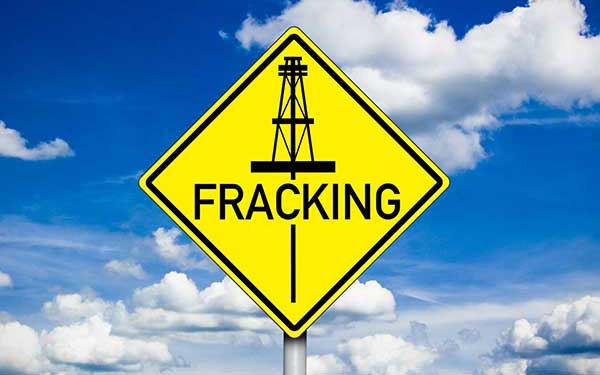California governor Gavin Newsom wants to stop issuing fracking permits in the state by 2024 as part of an ambitious package of clean energy ideas.
Newsom has also revealed plans to ban gas-powered car sales by 2035 and stop all oil drilling by 2045.
The statements followed President Joe Biden’s announcements about cutting the United States’ carbon emissions in half by 2030.
Newsom banned issuing new fracking permits two years ago, only for that decision to be reversed in 2020.
Why Is Fracking Controversial?
Several studies suggest living close to oil and gas fracking developments may have negative health consequences.
An estimated 17.6 million Americans live within one mile of a fracking site. California, Texas, Ohio, Oklahoma, and Pennsylvania all have one million or more people living within one mile of a well, with Texas having the greatest number at 4.5 million people. Indeed, fracking rigs are so commonplace throughout the U.S. that NASA satellites spot the flares from rigs.
Among the side effects, have shown that fracking may affect air quality and can contaminate surface water, groundwater, and soil. Nearby residents report respiratory problems, headaches, and fatigue. Research in California has linked fracking pollutants to low birth weights and maternal stress, and in Colorado, to congenital heart defects.
What Is Fracking?
Fracking involves injecting pressurized water mixed with chemicals and sand into shale formations. The process breaks up the rocks to release the oil and gas held there, which then flow up to the head of the well.
The term fracking comes from this “fracturing” of bedrocks and shale.
California at Energy Crossroads
Governor Newsom’s fracking declaration is symbolic of the energy battle that is already raging in the Golden State he governs.
In 1985, California reached its peak annual production of By contrast, in 2020, California produced 144 million barrels of oil, around two-thirds less than at its peak, but still making it the seventh-largest oil producer in the United States.
Western States Petroleum Association (WSPA) says the industry employs more than 150,000 people.
WSPA president and CEO Catherine Reheis-Boyd countered Newsom’s proposals in a statement. She said: “Banning nearly 20% of the energy production in our state will only hurt workers, families, and communities in California. We will join with workers, community leaders, and others who wish to protect access to safe, affordable and reliable energy to fight this harmful and unlawful mandate.”
Behavior patterns may already have given Governor Newsom an advantage.
Electric Cars Charging Ahead
Transportation made up 29% of the United States’ greenhouse gas emissions in 2019. That same year, California accounted for 10% of the total U.S. petroleum demand. Transportation accounts for two-fifths of the state’s end-use energy consumption.
The customer is always right, or so the saying goes, and it seems to be the case in California’s energy market where motorists are leading a possible paradigm shift. By the end of 2019, California drivers owned almost 600,000 electric and plug-in hybrid vehicles. Despite the COVID-19 crisis in 2020, California’s electric vehicle (EV) exports totaled $5.6 billion last year, the state’s most valuable export.
The increasing EV fleet will tap into California’s renewable energy boom. In 2019, more than half of California’s electricity came from renewables. Solar is the most significant renewable contributor at 31% of electricity generation. More and more motorists are buying and traveling in zero-emissions vehicles, possibly forcing the hand of fossil fuel producers through falling demand.
The World Is Watching
Newsom remains committed to tackling fracking. He said: “As we move to swiftly decarbonize our transportation sector and create a healthier future for our children, I’ve made it clear I don’t see a role for fracking in that future and, similarly, believe that California needs to move beyond oil.”
The battle for California’s energy provision could be a weather vane for not only U.S. policy but worldwide trends, too.
Opinion writer: Tom Shearman
The opinions, beliefs, and viewpoints expressed by the various authors do not necessarily reflect the opinions, beliefs, or viewpoints of Interactive Energy Group, LLC (IEG) or its parent companies or affiliates and may have been created by a third party contracted by IEG. Any content provided by the bloggers or authors are of their opinion and are not intended to malign any individual, organization, company, group, or anyone or anything.
Brought to you by energysavings.com
All images licensed from Adobe Stock.
Featured Image

